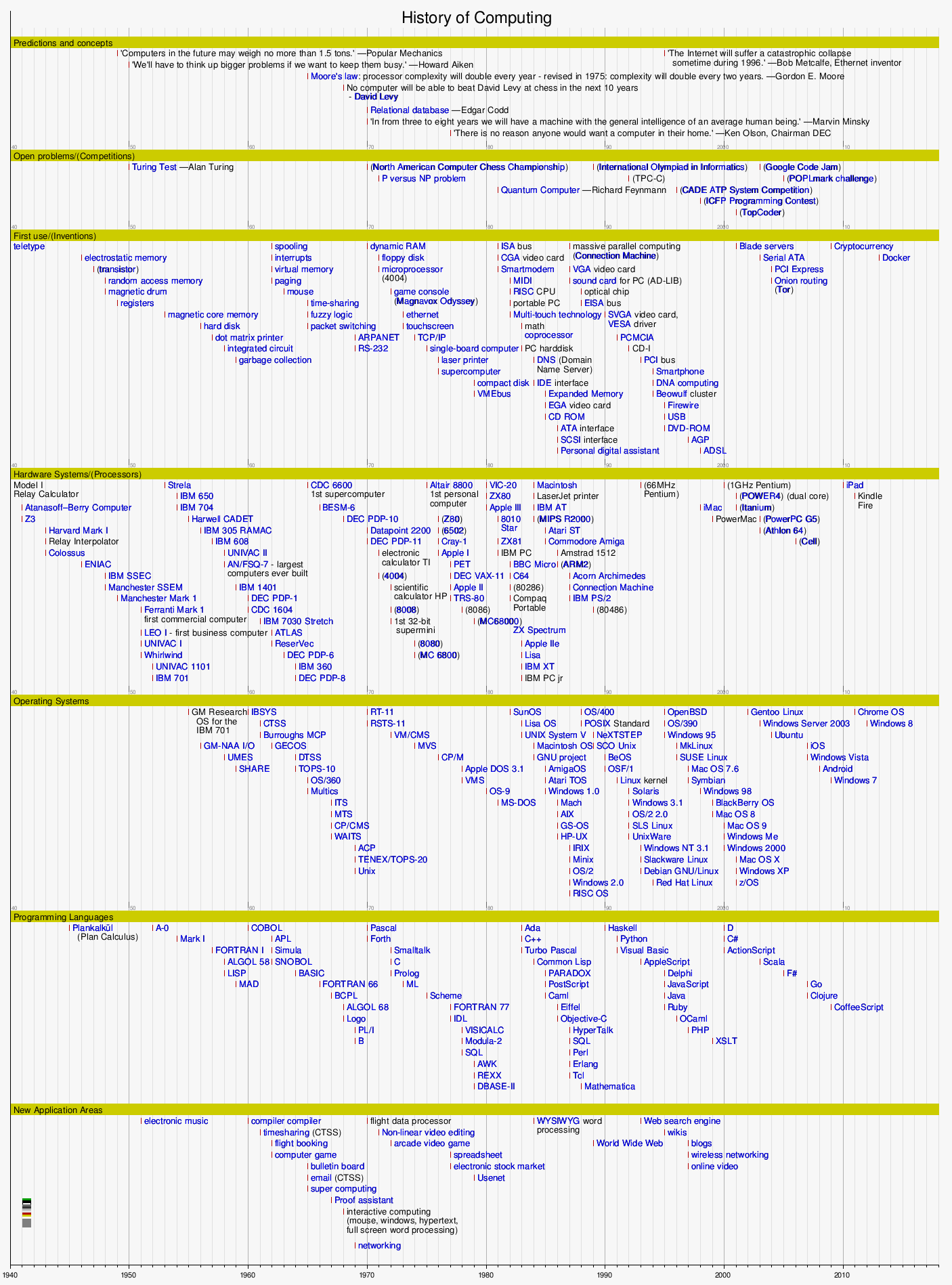Timeline of computing
| History of computing |
|---|
| Hardware |
| Software |
| Computer science |
| Modern concepts |
| By country |
| Timeline of computing |
| Glossary of computer science |
|
Timeline of computing presents events in the history of computing organized by year and grouped into six topic areas: predictions and concepts, first use and inventions, hardware systems and processors, operating systems, programming languages, and new application areas.
Detailed computing timelines: before 1950, 1950–1979, 1980–1989, 1990–1999, 2000-2009, 2010-
Graphical timeline

See also
- History of compiler construction
- History of computing hardware – up to third generation (1960s)
- History of computing hardware (1960s–present) – third generation and later
- History of the graphical user interface
- History of the Internet
- List of pioneers in computer science
Resources
- Stephen White, A Brief History of Computing
- The Computer History in time and space, Graphing Project, an attempt to build a graphical image of computer history, in particular operating systems.

- "File:Timeline.pdf - Engineering and Technology History Wiki" (PDF). ethw.org. 2012. Retrieved 2018-03-03.
External links
This article is issued from
Wikipedia.
The text is licensed under Creative Commons - Attribution - Sharealike.
Additional terms may apply for the media files.